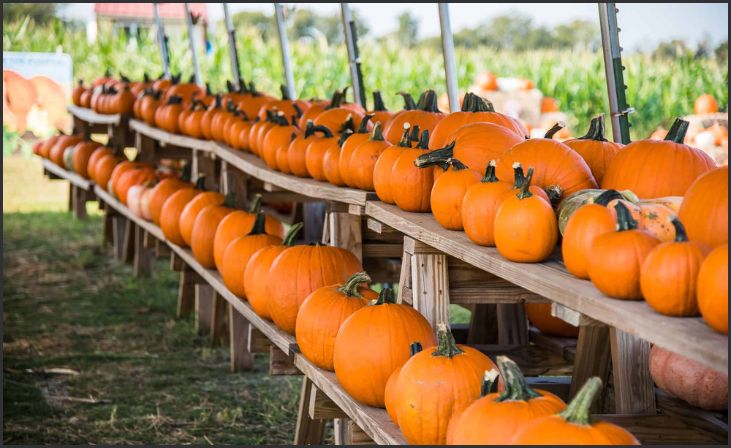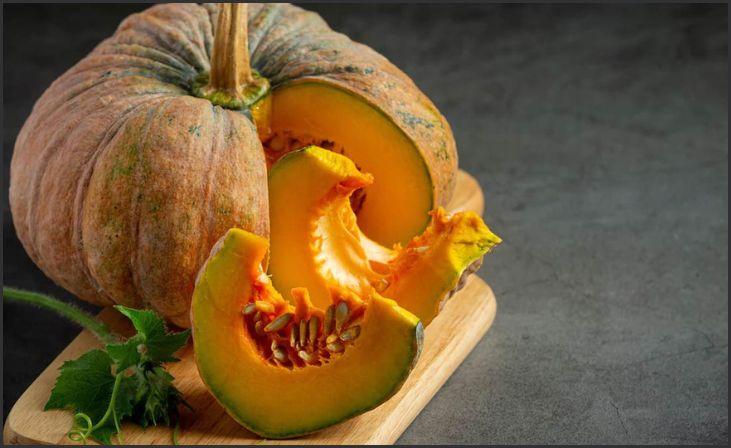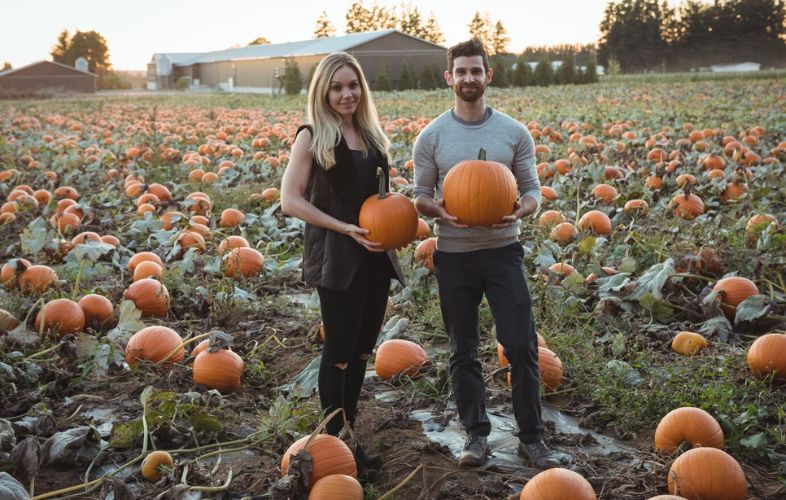Welcome to the ultimate guide on selecting the perfect pumpkin varieties! Whether you’re gearing up for carving jack-o’-lanterns, baking delicious pies, or decorating your home, the right pumpkin can make all the difference.
In this comprehensive guide, we’ll explore the diverse world of pumpkins, from classic jack-o’-lantern varieties to those ideal for creating mouthwatering autumn treats. Learn to discern between pumpkins based on size, color, shape, and texture, while considering the crucial factors of growing conditions.
Discover popular pumpkin varieties, each with its unique charm, and gain valuable tips on how to select the perfect pumpkin for your specific needs. Get ready to embark on a pumpkin-picking adventure, ensuring your fall celebrations are filled with the best pumpkins Mother Nature has to offer!
Picking the Perfect Pumpkin Varieties
Purpose

For decorating, choose smaller pumpkins with unique shapes and colors. Opt for medium-sized, smooth-surfaced pumpkins for carving intricate designs. Classic round, orange pumpkins are ideal for traditional displays, while tall and skinny varieties add a unique touch.
Consider white, green, or other colors for a modern look. Ensure the skin is firm and free of blemishes, with a strong, intact stem.
Select pumpkins with a heftier weight for moisture-rich options in cooking. Tap for a hollow sound, indicating ripeness. Explore local varieties for freshness and climate suitability. Inspect for cuts or pest damage, and for long-term storage, prioritize thicker-skinned pumpkins.
Also, Read – Super Soft Pumpkin Cookies Recipes
Size
Choose pumpkins based on size for their intended purpose: small to medium for tabletop decorations and easy carving, or large for impressive displays. Small pumpkins are ideal for intricate designs, while medium ones strike a balance.
Consider the convenience of handling and carving when selecting the size. For cooking purposes, opt for a size that aligns with your recipe requirements.
Remember, smaller pumpkins are easier to manage, while larger ones offer a grand visual impact. Tailor your choice to fit your specific needs, ensuring the perfect pumpkin size for your intended use.
Shape
Selecting pumpkins based on shape enhances the visual appeal of your display. Classic, round pumpkins are versatile for both carving and decorating, while tall and skinny varieties add a touch of uniqueness.
Round pumpkins are suitable for traditional designs, while elongated shapes can bring a modern aesthetic. Consider the intended purpose, as round pumpkins are optimal for carving intricate patterns, and unique shapes can elevate your decorative arrangements.
Choose a variety of shapes to create visual interest, experimenting with combinations that complement your overall design vision. Whether classic or unconventional, the shape of your pumpkins contributes significantly to the overall visual impact.
Color
Pumpkin color plays a vital role in creating the desired atmosphere. Opt for classic, vibrant orange for a traditional look that complements autumn themes. White or green pumpkins offer a contemporary and elegant twist, providing a fresh and modern feel to your display.
The color choice can impact the overall aesthetic, so select hues that harmonize with your decorating vision. Mixing various colors adds visual interest and depth to your arrangement.
Consider the surrounding environment and the intended mood, ensuring that the pumpkin colors align seamlessly with your decorative theme, making your display visually captivating and aesthetically pleasing.
Skin Condition

Prioritize pumpkins with smooth, blemish-free skin for carving or decorating. A flawless surface ensures a clean canvas for intricate designs and enhances the pumpkin’s visual appeal. Look for pumpkins with firm skin, indicating freshness and durability.
A healthy exterior contributes to the pumpkin’s longevity, making it suitable for both short-term displays and long-term storage.
Inspect for any soft spots, cuts, or bruises, which may signify spoilage or damage. A well-maintained skin condition not only enhances the pumpkin’s aesthetics but also contributes to its overall quality, ensuring a successful and visually pleasing addition to your decor or culinary endeavors.
Stem
A pumpkin’s stem is a crucial indicator of its health and longevity. Choose pumpkins with intact, firm stems, as they serve as a sign of freshness and durability. A sturdy stem not only suggests the pumpkin’s recent harvest but also facilitates easy handling and transportation.
A healthy, well-attached stem contributes to the overall structural integrity of the pumpkin. When selecting pumpkins for decorating or carving, a strong stem provides a reliable point of grip.
Inspecting the stem’s condition ensures that your chosen pumpkins are not only visually appealing but also robust, enhancing their suitability for various purposes, from decorative displays to culinary endeavors.
Also, Read – Pumpkin Bread Recipe
Weight
Consider the weight of pumpkins when making your selection, as it indicates freshness and moisture content. Heavier pumpkins generally signal a higher water content, crucial for cooking and ensuring a juicy, flavorful result.
When planning to carve or decorate, a moderate weight is often preferred for easier handling. Lighter pumpkins may suggest dehydration or a lack of ripeness.
While weight alone is not the sole indicator of quality, it provides insights into the pumpkin’s overall condition. Balance your choice based on your intended use, opting for a weight that aligns with your specific needs, whether for culinary endeavors or aesthetic displays.
Ripeness
Choose pumpkins at their peak ripeness for optimal quality. Look for deep, vibrant colors, a sign of maturity. Gently tap the pumpkin; a hollow sound indicates ripeness. A fully mature pumpkin feels firm and heavy for its size, suggesting a good water content.
Inspect for a consistent color across the entire surface, avoiding greenish patches. Check the stem; a dry, firmly attached stem signals readiness. Overly soft spots or blemishes may indicate overripeness or spoilage.
Selecting ripe pumpkins ensures better flavor for culinary use and a longer-lasting, vibrant appearance for decorative purposes, making them a delightful addition to your fall festivities.
Local Varieties
Explore local pumpkin varieties for freshness, adaptability, and unique flavors. Purchasing from local farmers or markets ensures pumpkins suited to your climate, enhancing their overall quality. Local varieties are often harvested at the peak of ripeness, guaranteeing better taste and longevity.
Engage with farmers to gain insights into the best choices for your specific region. Supporting local agriculture also promotes sustainability and community well-being.
Whether for culinary creations or festive displays, local pumpkin varieties showcase regional diversity and contribute to a more environmentally conscious and flavorful seasonal experience. Embrace the rich offerings of your local harvest for a truly authentic fall celebration.
Check for Pests
Thoroughly inspect pumpkins for signs of pests before making a selection. Examine the surface for cuts, holes, or irregularities that may indicate insect damage. Be vigilant around the stem area and undersides, common hiding spots for pests.
Avoid pumpkins with visible pest infestations, as this can compromise the pumpkin’s quality and longevity. Check for any unusual markings, such as trails or droppings, which may signify the presence of pests.
A careful examination ensures that your chosen pumpkins are free from unwanted inhabitants, preserving their integrity for both decorative purposes and culinary use.
Consider Storage

When choosing pumpkins, consider your storage plans. For short-term displays or carving, prioritize aesthetics. Opt for pumpkins with smooth skin and unique shapes. If planning long-term storage or culinary use, select varieties with thicker skin for better preservation.
Ensure the pumpkins are free from cuts or damage that could compromise storage quality. Store in a cool, dry place away from direct sunlight to prolong freshness.
Smaller pumpkins are often easier to store. Factor in your available space and storage conditions when making your selection, ensuring your pumpkins remain in optimal condition for the duration of their intended use.
Conclusion
In conclusion, selecting the ideal pumpkin involves a delightful blend of art and science. From considering size and color to understanding growing conditions, this guide empowers you to make informed choices.
As you venture into local patches or farmers’ markets, embrace the diversity of pumpkin varieties. Whether for carving, baking, or decorating, let your preferences guide you. Support local growers, savor the harvest, and relish the joy that comes with finding the perfect pumpkin.
May your fall festivities be enriched by the unique charm of each carefully chosen gourd. Happy pumpkin picking!
FAQs
Consider the pumpkin’s intended use (carving, cooking, decorating), size, color, shape, and texture. Assess local growing conditions and choose a variety that suits your climate.
Yes, certain varieties are better suited for carving, known as jack-o’-lantern pumpkins, while others, like sugar pie pumpkins, are ideal for cooking and baking
Ripe pumpkins typically have uniform color, a firm exterior, and a sturdy stem. Press your fingernail into the skin; if it resists puncture, it’s likely ripe.

Leave a Reply